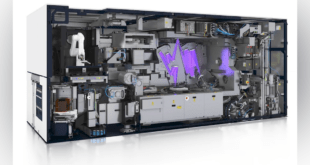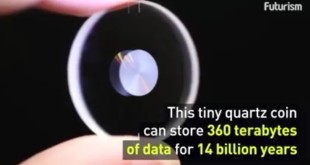Introduction
In the ever-evolving landscape of display technology, Micro-LED has emerged as a groundbreaking innovation that promises to redefine the way we experience visuals. Offering superior brightness, energy efficiency, and a wide range of applications, Micro-LED technology is making waves in various industries, from consumer electronics to healthcare and automotive. In this article, we will explore the exciting world of Micro-LED technology and its diverse range of applications.
Understanding Micro-LED Technology
Micro-LED, short for micro light-emitting diode, is a display technology that harnesses the power of tiny, individual LED components to create vibrant and dynamic displays. These LEDs are incredibly small, typically less than 100 micrometers in size, allowing for the creation of high-resolution displays with extraordinary pixel density. This allows for incredibly high-resolution displays with perfect black levels, infinite contrast ratios, and wide color gamuts.
The basic structure of a Micro-LED display consists of an array of individual Micro-LEDs, each capable of emitting its own light. These Micro-LEDs can be precisely controlled, which makes them ideal for creating displays with deep blacks, high contrast ratios, and rich, accurate colors. The key advantages of Micro-LED technology include:
- Exceptional Brightness: Micro-LEDs are renowned for their extraordinary brightness, making them suitable for outdoor displays, bright living room TVs, and virtual reality headsets.
- Energy Efficiency: Compared to traditional LCD displays, Micro-LEDs consume significantly less power, leading to longer battery life in portable devices and reducing overall energy consumption.
- Longevity: Micro-LEDs have an impressive lifespan, with many displays capable of lasting tens of thousands of hours before experiencing noticeable degradation.
- Flexibility: Micro-LEDs can be fabricated on flexible substrates, enabling the creation of curved and flexible displays for various applications.
Applications of Micro-LED Technology
- Consumer Electronics:
- TVs: Micro-LED technology is revolutionizing the television industry by offering brighter, more energy-efficient, and slimmer displays with superior color accuracy. Users can enjoy cinematic experiences at home with resolutions up to 8K.
- Smartphones: Micro-LED displays are expected to enhance the quality of smartphone screens, providing users with vivid colors and improved outdoor visibility. Additionally, the energy efficiency of Micro-LEDs can extend battery life.
- Automotive Displays:
- Head-Up Displays (HUDs): Micro-LEDs are perfect for HUDs, as they provide bright and crisp information displays directly in the driver’s line of sight, improving safety and convenience.
- Infotainment Systems: Micro-LEDs can be integrated into in-car infotainment systems, offering high-quality touchscreens, rear-seat entertainment, and even augmented reality displays.
- Wearable Technology:
- Smartwatches: Micro-LED technology’s energy efficiency and compact size make it an ideal choice for smartwatch displays, offering vibrant visuals without sacrificing battery life.
- AR/VR Headsets: Augmented and virtual reality experiences benefit from the high brightness and pixel density of Micro-LEDs, resulting in more immersive and realistic interactions.
- Healthcare:
- Medical Imaging: Micro-LED displays are used in medical imaging equipment such as endoscopes and surgical displays, providing precise and accurate visuals for healthcare professionals.
- Wearable Health Devices: Wearable health tech can benefit from Micro-LEDs to display vital information clearly to users.
- Public Displays:
- Outdoor Signage: Micro-LED displays can endure various weather conditions while delivering outstanding visuals, making them a favorite choice for outdoor advertising and signage.
- Digital Billboards: The unparalleled brightness and longevity of Micro-LEDs offer an excellent solution for eye-catching and energy-efficient billboards.
Challenges
The full realization of Micro-LED technology is accompanied by several challenges that must be addressed. Firstly, cost remains a significant hurdle, as the manufacturing of Micro-LED displays is currently expensive. However, as the technology advances and production processes become more streamlined, it is anticipated that costs will decrease.
Additionally, yield is a concern, with a considerable number of micro-LEDs currently found to be defective during production. Researchers are actively engaged in enhancing the yield rates of these displays to reduce waste.
Another challenge stems from the small and delicate nature of Micro-LEDs, making their transfer from the wafer to a substrate a delicate process. Innovative methods for damage-free transfer are under development, ensuring the integrity of these tiny yet powerful components. Addressing these challenges is crucial for unlocking the full potential of Micro-LED technology in various applications.
Recent advancements in Micro-LED technology have ushered in a new era of display innovation:
- High-Resolution Marvels: Samsung researchers have made an astonishing breakthrough by creating Micro-LED displays with a staggering resolution of 10,000 pixels per inch (ppi). This remarkable feat far surpasses the typical 500 ppi resolution of OLED displays, promising unparalleled clarity and detail in visual content.
- Flexibility Redefined: At the University of California, Berkeley, scientists have unlocked the potential of flexible Micro-LED displays that can be bent without causing harm to the LEDs. This flexibility opens up a realm of possibilities, making Micro-LED displays an ideal choice for wearable devices, where adaptability and durability are paramount.
- Efficiency Enhancement: Researchers at the Massachusetts Institute of Technology (MIT) have introduced a new breed of highly efficient Micro-LEDs. These innovations promise to make Micro-LED displays more cost-effective and practical across a wider spectrum of applications, ensuring energy savings and improved functionality.
- Miniaturization Mastery: Stanford University researchers have downsized Micro-LED technology, producing remarkably smaller Micro-LEDs compared to previous iterations. This miniaturization paves the way for more portable Micro-LED displays that seamlessly integrate into existing systems, expanding the potential applications of this transformative technology.
Design for gallium indium nitride (GaInN)-based micro-LEDs for Immersive Displays
Researchers from Meijo University and King Abdullah University of Science and Technology (KAUST) have introduced a design featuring gallium indium nitride (GaInN)-based Micro-LEDs, presenting a significant leap in achieving heightened definition, resolution, and color richness in immersive displays. This development has profound implications for augmented reality (AR) and metaverse applications, promising to redefine how we interact with digital worlds.
The Power of GaInN Semiconductors
The foundation of highly realistic displays lies in achieving high resolution, intricate detail, and a broad color spectrum. GaInN semiconductors have emerged as the key component, enabling the creation of high-performance LEDs that can meet these demanding criteria. A critical breakthrough lies in constructing GaInN-based LEDs as a single unit on the same substrate, a feat successfully accomplished by the researchers.
Stacked RGB Micro-LED Arrays
The researchers employed an innovative approach, crafting monolithic, stacked, RGB Micro-LED arrays by utilizing GaInN-based tunnel junctions to connect each LED on a single wafer. These arrays were meticulously assembled through crystal growth, featuring the stacking of blue and green LED structures with GaInN-based tunnel junctions, culminating in the stacking of red LEDs on top of the blue and green ones. To enhance the emission efficiency of the red LEDs, a blue GaInN superlattice and GaInN single-quantum well were strategically inserted between an n-type GaN layer and the active layer in the red LED structure.
Motoaki Iwaya, a professor at Meijo University, elucidated, “We sequentially stacked blue, green, and red Micro-LED arrays — connected by tunnel junctions, based on the quantum mechanical principle of electron transport through a thin insulating layer — onto the same wafer.”
These wafers were crafted on gallium nitride (GaN) substrates, employing the metal-organic vapor phase epitaxy method. The construction of the Micro-LED arrays utilized metal-enhanced substrate adhesion architectures and existing manufacturing methods.
Impressive Pixel Density and Spectral Performance
The GaInN-based Micro-LED arrays achieved an exceptional pixel density of 330 pixels per inch. Tests conducted at room temperature (approximately 26°C) and direct current yielded remarkable results, with each Micro-LED emitting blue, green, and red light at peak wavelengths of 486, 514, and 604 nm, respectively, at a current density of 50 A/cm². Notably, the emission spectrum’s full width at half maximum was sufficiently narrow to emit distinct and vivid red, blue, and green light, ensuring accurate and vibrant colors.
Towards Realistic Immersive Experiences
While this research represents a significant stride forward, there remain challenges to overcome, such as extraneous emitted wavelengths and variations in red and blue emissions, often due to damage during device fabrication. The researchers are optimistic that optimizing crystal growth conditions will mitigate these issues.
Daisuke Iida, a researcher involved in the project, underscored the significance of preparing devices on cost-effective sapphire substrates for practical application, expressing that “Such work is underway in our laboratory.” This breakthrough is a pivotal step toward realizing immersive visual experiences characterized by ultrahigh brightness and definition.
Conclusion
Micro-LED technology is poised to disrupt a wide array of industries, bringing brighter, more energy-efficient displays with exceptional longevity and color accuracy. As advancements in Micro-LED technology continue to unfold, we can anticipate even more innovative applications across different sectors. From the consumer electronics space to healthcare and beyond, the future illuminated by Micro-LEDs promises to be vibrant and dynamic. They promise to deliver realistic and vivid visuals, enhancing the quality of augmented reality and metaverse applications, and offering users a more immersive digital experience. So, whether you’re enjoying a cinematic experience at home, staying informed on the road, or receiving vital health data, Micro-LED technology is set to enrich our lives in numerous ways.
 International Defense Security & Technology Your trusted Source for News, Research and Analysis
International Defense Security & Technology Your trusted Source for News, Research and Analysis

